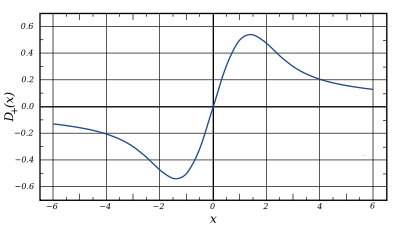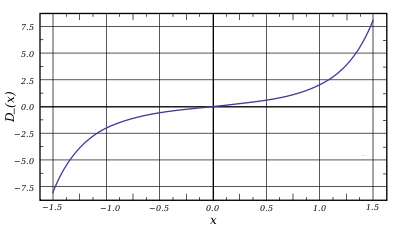- Dawson function
-
In mathematics, the Dawson function (named for John M. Dawson) is
The notation D(x) is also in use. The Dawson function is also called the Dawson integral. A variation of this function is given by
The Dawson function is closely related to the error function erf, as
where erfi is the imaginary error function, erfi(x) = −i erf(ix).
For |x| near zero, F(x) ≈ x, and for |x| large, F(x) ≈ 1/(2x). More specifically, near the origin it has the series expansion
F(x) satisfies the differential equation
with the initial condition F(0) = 0.
References
- Press, WH; Teukolsky, SA; Vetterling, WT; Flannery, BP (2007), "Section 6.9. Dawson's Integral", Numerical Recipes: The Art of Scientific Computing (3rd ed.), New York: Cambridge University Press, ISBN 978-0-521-88068-8, http://apps.nrbook.com/empanel/index.html#pg=302
- Temme, N. M. (2010), "Error Functions, Dawson’s and Fresnel Integrals", in Olver, Frank W. J.; Lozier, Daniel M.; Boisvert, Ronald F. et al., NIST Handbook of Mathematical Functions, Cambridge University Press, ISBN 978-0521192255, MR2723248, http://dlmf.nist.gov/7
External links
- Cephes – C and C++ language special functions math library
- Dawson's Integral (at Mathworld)
- Error functions

This applied mathematics-related article is a stub. You can help Wikipedia by expanding it.







